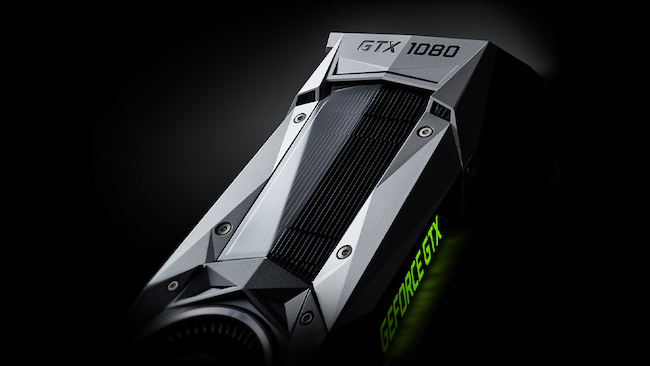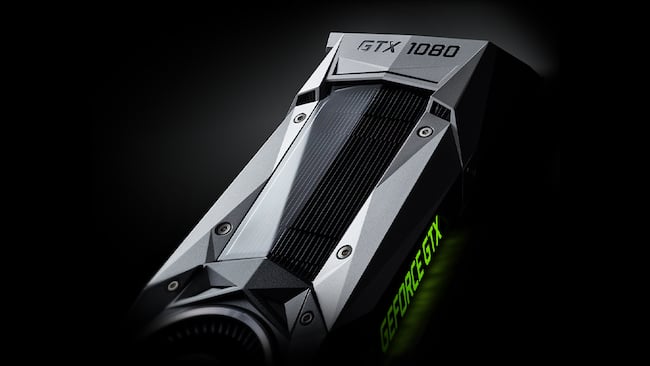
 The new standard in graphics cards
The new standard in graphics cards
Nvidia launched its GTX 1080 graphics chip before Computex to a wave of favourable reviews that made gamers drool in anticipation. Leo Waldock was there.
I attended the Nvidia Press event in Austin, Texas on behalf of KitGuru and was impressed by the public presentation which was followed, the next day, by product demonstrations for the Press along with hours of briefings.
The public briefing was also covered by RedShark News, while the actual launch came along ten days after the news event and earned Nvidia a massive number of awards. I was told there were 103 journalists at the Austin event (certainly there was a large number) and every last one of them took away a sample GTX 1080 to review.
I gave my views on GTX 1080 at launch time so let's make a deal here, if you pop off and have a quick read/watch I shan't waste your time by doing a massive cut-and-paste job.
Instead I'll give a quick run-down of the headline points about GTX 1080 and clear up a couple of areas that Nvidia left somewhat vague.
The big news with GTX 1080 is a change in fabrication process from 28nm to 16nm FinFET which means Nvidia can cram a great many more transistors into a smaller chip. The number of CUDA cores has climbed from 2048 in GTX 980 to 2560 in GTX 1080 which takes it within knocking distance of the mighty Titan X which has 3072 CUDA cores.
The change in process also means that Nvidia has been able to raise clock speeds hugely. If we ignore base clock speeds and overclocking and simply look at Boost speeds, Titan X runs at 1076MHz, GTX 980 at 1216MHz and GTX 1080 at 1733MHz.
Taking those two numbers together it rapidly becomes clear that GTX 1080 should have some 60 percent extra performance over GTX 980, which is a massive increase from one generation to the next. To make this possible, Nvidia has moved from GDDR5 memory that operates at 7Gbps to GDDR5X at 10Gbps and has also worked on its compression technology to reduce the amount of wasted work performed by GTX 1080.
This massive clock speed has been achieved without the need for more power and GTX 1080 Founder's Day has a single eight-pin connector where you would usually expect to find two power connectors. Nvidia demonstrated their GTX 1080 running at 65 Celsius but reviews show temperatures about ten degrees warmer. While we're on that topic, Nvidia had their GTX 1080 running at 2100MHz which is 50MHz or 100MHz faster than most reviewers managed so it seems that Nvidia picked a particularly good GTX 1080 to show in public.
That is a shamefully brief summary of the new Pascal chip but for our purposes it should suffice.
While GTX 1080 is undoubtedly impressive the launch was a strange affair.
Nvidia gave a public briefing that included the on-sale date of the 27th May whilst the Press was under NDA about performance and technical details until the 17th May. There doesn't seem to be any obvious reason why the NDA didn't lift at the same moment the graphics card went on sale, unless that would have been uncomfortably close to Computex which kicks off in Taiwan next week.
So why didn't GTX 1080 go on sale on the 17th May? Presumably this is to give time for Nvidia's partners to produce graphics cards that can be sold to the gaming public. The split timing meant that reviews do not refer to the prices of graphics cards from the likes of Asus, EVGA or Zotac as the focus of attention was the reference card that was handed out by Nvidia.
We were told the Founder's Edition would sell for US$699 and other cards for US$599 however it became clear that 'Founder's Edition' is Nvidia's new term for a reference design. Generally speaking you expect a reference design to set the floor price for a new model which would leave room for Nvidia's partners to move upwards in terms of design, features and price. For the time being the range of prices for GTX 1080 is £525-£680
When you consider that GTX 980 costs £400 and GTX 980Ti is £500 we can see the new GTX 1080 sits between 980Ti and the £900 Titan X. That is perfectly reasonable but you would hope the new GTX 1080 would have simply replaced the existing GTX 980. No such luck.
None of the above changes the fact that GTX 1080 is an epic graphics card however it doesn't bring a new level of performance for the same money but instead stretches the reach of Nvidia's graphics range.
There are two other factors to consider. The first is that GTX 1070 has just launched (on paper) and is expected to cost £350-£400. This card will use GDDR5, rather than GDDR5X, and as a consequence it is likely the memory will limit performance so it will likely slot in between 980 and 980Ti. This means it is a worthy product that fills a gap, rather than breaking new ground.
My final thought about GTX 1080 is that it was designed to use HBM2 memory which ought to be available later this year. GDDR5X is an interim step. A Pascal chip running on HBM2 has the potential to make GTX 1080 look positively limp and will finally mean we can game at 4K on a single graphics card.
Sorry, I mean create VR content and edit videos. Definitely not play games. Oh no...
Tags: Technology


Comments